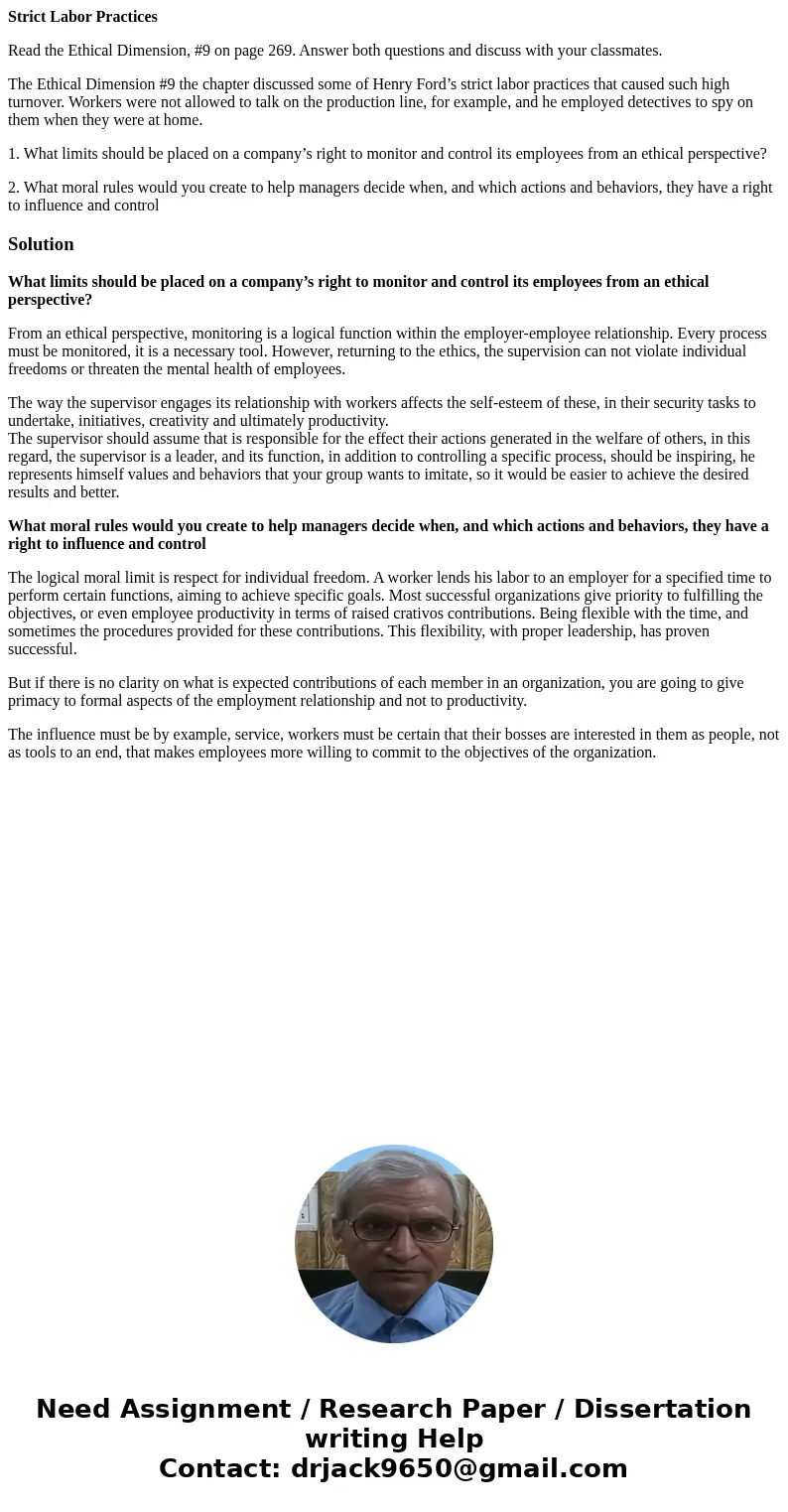Strict Labor Practices Read the Ethical Dimension 9 on page
Strict Labor Practices
Read the Ethical Dimension, #9 on page 269. Answer both questions and discuss with your classmates.
The Ethical Dimension #9 the chapter discussed some of Henry Ford’s strict labor practices that caused such high turnover. Workers were not allowed to talk on the production line, for example, and he employed detectives to spy on them when they were at home.
1. What limits should be placed on a company’s right to monitor and control its employees from an ethical perspective?
2. What moral rules would you create to help managers decide when, and which actions and behaviors, they have a right to influence and control
Solution
What limits should be placed on a company’s right to monitor and control its employees from an ethical perspective?
From an ethical perspective, monitoring is a logical function within the employer-employee relationship. Every process must be monitored, it is a necessary tool. However, returning to the ethics, the supervision can not violate individual freedoms or threaten the mental health of employees.
The way the supervisor engages its relationship with workers affects the self-esteem of these, in their security tasks to undertake, initiatives, creativity and ultimately productivity.
The supervisor should assume that is responsible for the effect their actions generated in the welfare of others, in this regard, the supervisor is a leader, and its function, in addition to controlling a specific process, should be inspiring, he represents himself values and behaviors that your group wants to imitate, so it would be easier to achieve the desired results and better.
What moral rules would you create to help managers decide when, and which actions and behaviors, they have a right to influence and control
The logical moral limit is respect for individual freedom. A worker lends his labor to an employer for a specified time to perform certain functions, aiming to achieve specific goals. Most successful organizations give priority to fulfilling the objectives, or even employee productivity in terms of raised crativos contributions. Being flexible with the time, and sometimes the procedures provided for these contributions. This flexibility, with proper leadership, has proven successful.
But if there is no clarity on what is expected contributions of each member in an organization, you are going to give primacy to formal aspects of the employment relationship and not to productivity.
The influence must be by example, service, workers must be certain that their bosses are interested in them as people, not as tools to an end, that makes employees more willing to commit to the objectives of the organization.

 Homework Sourse
Homework Sourse